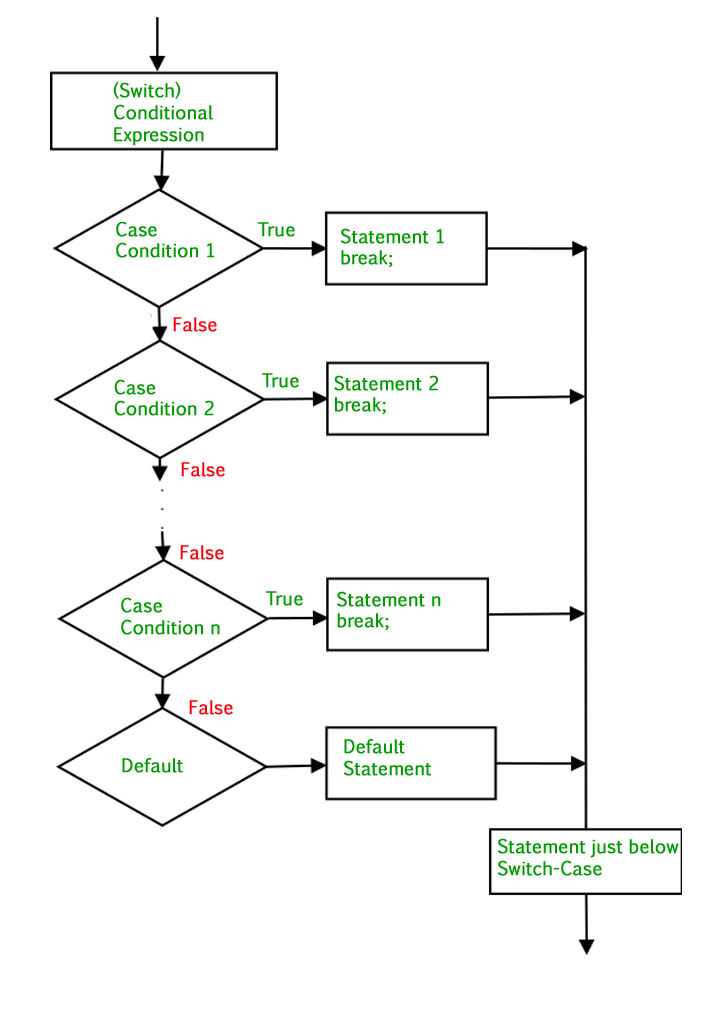PHP switch Statement (original) (raw)
Last Updated : 15 Feb, 2023
The switch statement is similar to the series of if-else statements. The switch statement performs in various cases i.e. it has various cases to which it matches the condition and appropriately executes a particular case block. It first evaluates an expression and then compares it with the values of each case. If a case matches then the same case is executed.
To use the switch, we need to get familiar with two different keywords namely, break and default.
- break: The break statement is used to stop the automatic control flow into the next cases and exit from the switch case.
- default: The default statement contains the code that would execute if none of the cases match.
Flowchart of switch statement:

Syntax:
switch(expression) { case val1: // Code Statement break; case val2: // Code statement break; ...
default:
// Code Statement}
Example 1: The following code demonstrates the switch statement.
PHP
<?php
`` $x = 2;
`` switch ( $x ) {
`` case 1:
`` printf( "Choice is 1" );
`` break ;
`` case 2:
`` printf( "Choice is 2" );
`` break ;
`` case 3:
`` printf( "Choice is 3" );
`` break ;
`` default :
`` printf( "Choice other than 1, 2 and 3" );
`` }
?>
Example 2:
PHP
<?php
`` $n = 'C' ;
`` switch ( $n )
`` {
`` case 'A' :
`` case 'B' :
`` printf( "A and B\n" );
`` break ;
`` case 'C' :
`` case 'D' :
`` printf( "C and D\n" );
`` break ;
`` default :printf( "Alphabet is greater than D\n" );
`` }
?>
Reference: https://www.php.net/manual/en/control-structures.switch.php
Similar Reads
- PHP Tutorial PHP is a widely used, open-source server-side scripting language primarily designed for web development. It is embedded directly into HTML and generates dynamic content on web pages, making it essential for building data-driven websites. It allows developers to handle database interactions, session 10 min read
- PHP Introduction PHP stands for Hypertext Preprocessor. It is an open-source, widely used language for web development. Developers can create dynamic and interactive websites by embedding PHP code into HTML. PHP can handle data processing, session management, form handling, and database integration. The latest versi 9 min read